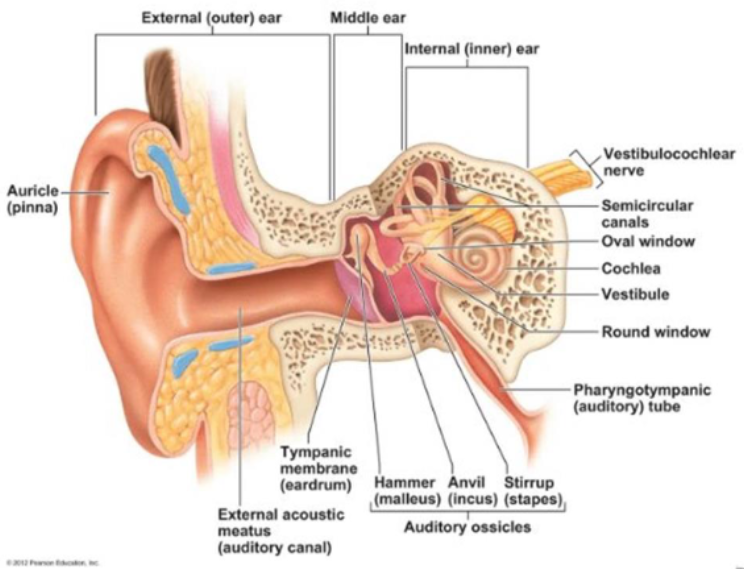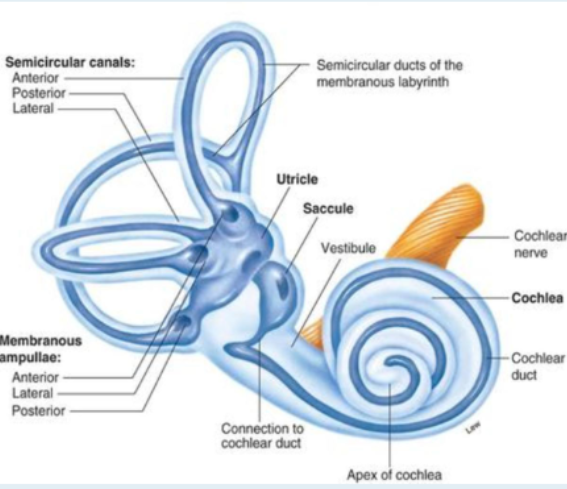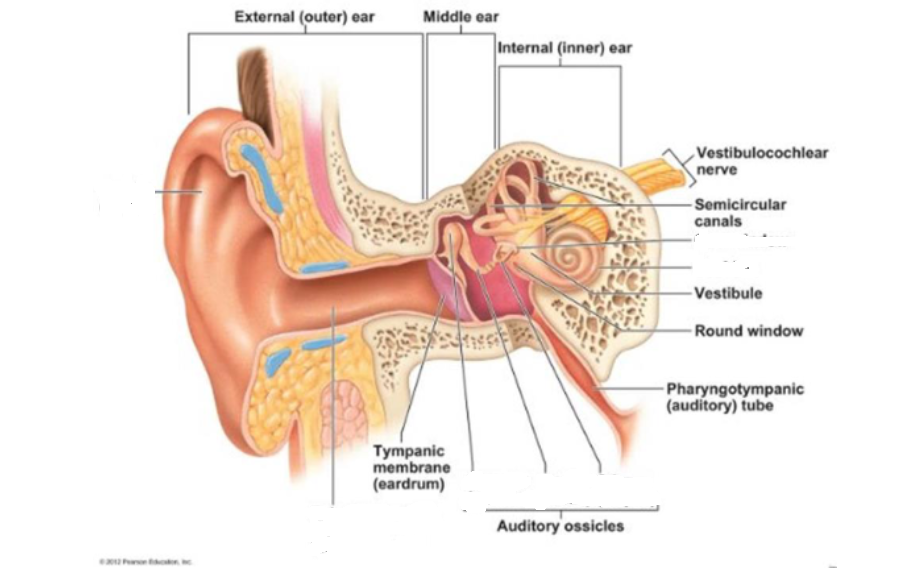Hearing and Balance
1/3
There's no tags or description
Looks like no tags are added yet.
Name | Mastery | Learn | Test | Matching | Spaced |
|---|
No study sessions yet.
4 Terms
External Ear
Auricle: what most people call the “ear” - the shell-shaped structure surrounding the auditory canal opening.
External acoustic meatus: a short, narrow chamber carved into the temporal bone of the skull; in its skin-lined walls are the ceruminous glands, which secrete waxy, yellow cerumen/earwax, which provides a sticky trap for foreign bodies.
Tympanic membrane (eardrum): sound waves entering the auditory canal eventually hit the eardrum and cause it to vibrate; the canal ends at the ear drum, which separates the external ear from the middle ear.

Middle Ear
Auditory Ossicles: they transmit sounds from the ear drum membrane to the liquid in the inner ear.
3 of the smallest bones in the body. Malleous (hammer), incus (anvil) and stapes (stirrup).
Oval Window: transmits vibrations from the stapes to the inner ear.
Eustachian Tube: drains into the masopharynx, main function is for ventilation and equalise air pressure.
Inner Ear
The inner ear supports balance and hearing.
Cochlea: shell-like spiral bone, contains a membranous duct that converts sound vibrations to neural impulses.
Semi-circular canals: fluid-filled canals are 3 looped-shaped organs that control balance and stability by sensing the rotation of the head in a 3D space.
Vestibule: a bony cavity within the temporal bone, that contains organs and nerves that help with balance.
The vestibular system detects changes in head position and motion, helping maintain balance and spatial orientation.


